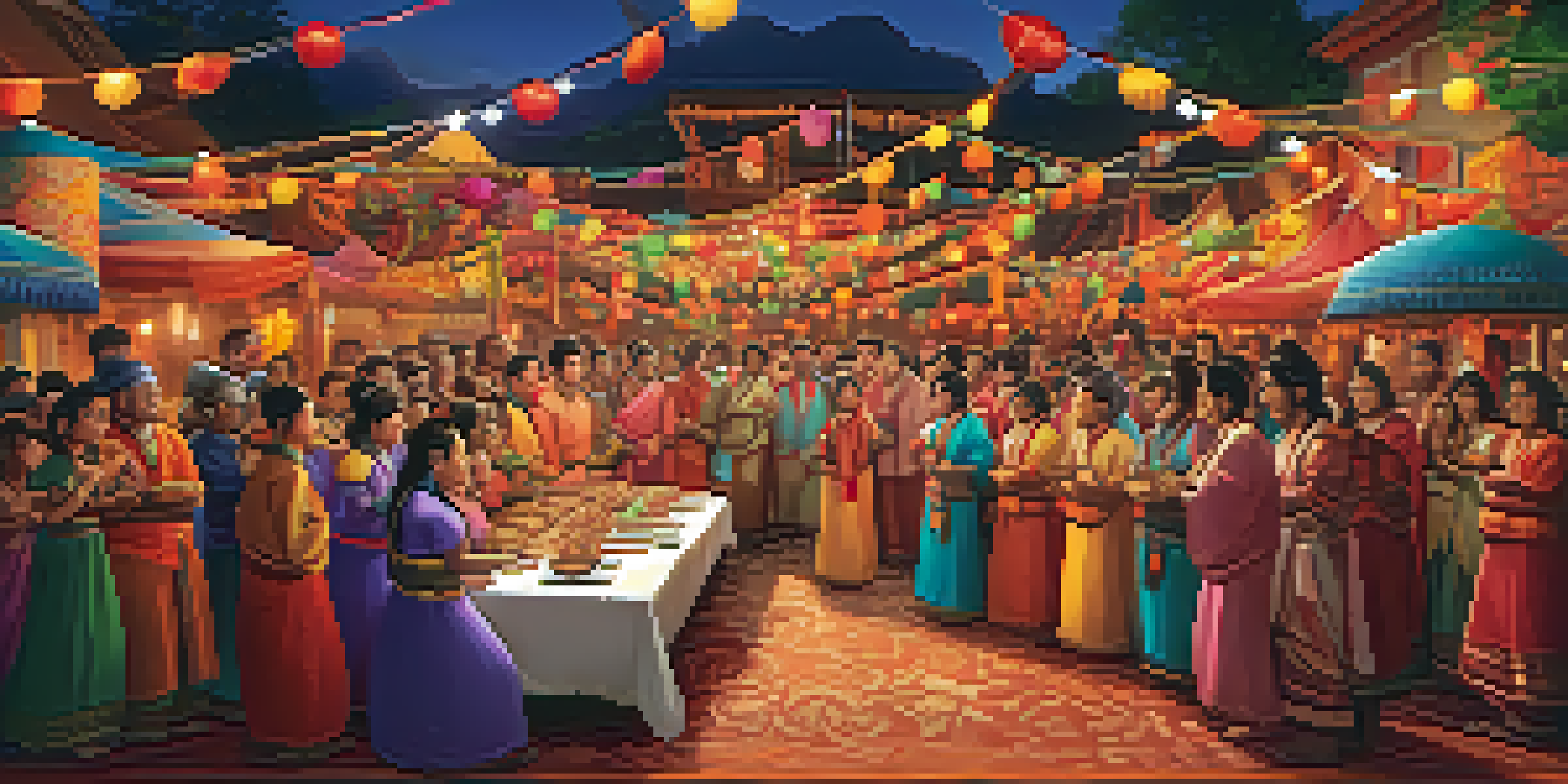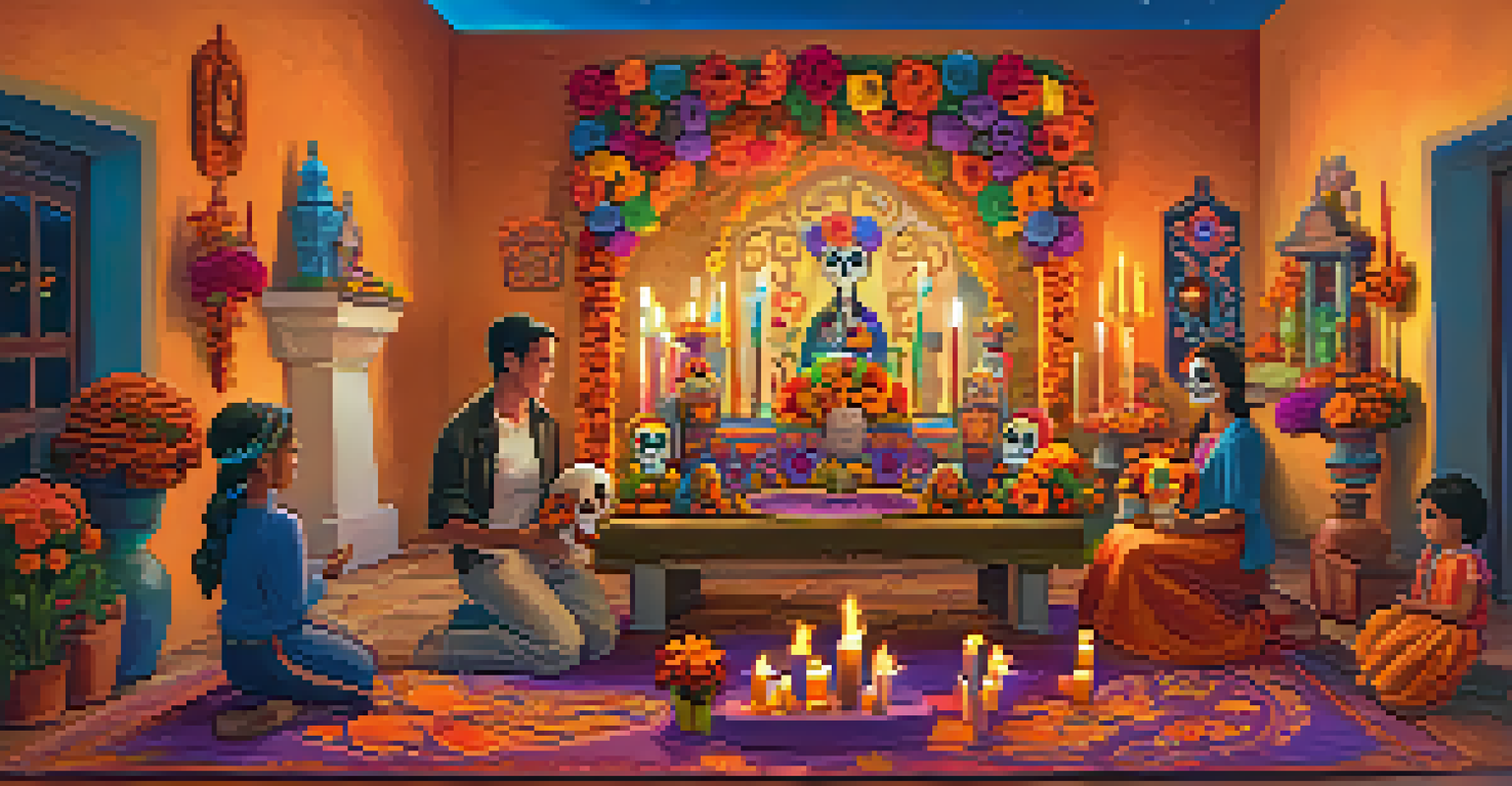Cultural Representation in Animation: A Hollywood Perspective

Understanding Cultural Representation in Animation
Cultural representation in animation refers to how different cultures are depicted in animated films and series. This can encompass everything from character design to storylines and voice acting. As animation has a global reach, the stakes for accurate and respectful representation have never been higher.
Diversity is not a set-aside program. It is a strategy for excellence.
Historically, animation often fell into the trap of stereotypes, presenting cultures in a one-dimensional manner. However, audiences today demand more nuanced portrayals that reflect the actual diversity and richness of various cultures. This shift is essential not only for representation but also for fostering understanding among audiences.
When done right, cultural representation can lead to more authentic storytelling. It allows creators to showcase the beauty and complexity of different cultures, which can resonate deeply with viewers who identify with those backgrounds. In this way, animation can serve as a powerful tool for education and empathy.
The Impact of Globalization on Animation
Globalization has transformed the animation landscape, making it easier for creators to access diverse cultural influences. This interconnectedness means that animated stories can draw from a wealth of traditions, languages, and artistic styles from around the world. As a result, animation can become a melting pot of ideas, enriching the narrative potential.

However, with globalization comes the challenge of cultural appropriation. It’s crucial for creators to navigate this landscape sensitively, recognizing the difference between appreciation and appropriation. Failing to do so can lead to backlash from communities who feel their culture is being misrepresented or exploited.
Cultural Representation Matters
Accurate and respectful cultural representation in animation fosters understanding and empathy among diverse audiences.
To strike a balance, many studios are now involving cultural consultants and hiring diverse writers and animators. This approach not only enhances authenticity but also allows for a more genuine representation of the cultures being portrayed. The goal is to create animated content that honors the source material while also engaging a global audience.
Notable Examples of Cultural Representation
There are several animated films and series that have been praised for their respectful cultural representation. For instance, Disney’s 'Moana' showcases Polynesian culture with care, featuring a predominantly Pacific Islander cast and consulting cultural experts. The film not only tells a compelling story but also educates audiences about the significance of Polynesian mythology and values.
The power of storytelling is that it can bridge cultural divides and foster empathy.
Another great example is Pixar's 'Coco', which celebrates Mexican culture and traditions surrounding Día de los Muertos. By incorporating authentic music, visuals, and themes, the film resonates with audiences while providing insight into the richness of Mexican heritage. This commitment to authenticity is key to its success and acceptance.
These films highlight that when animation prioritizes cultural representation, it can result in both critical acclaim and box office success. The positive reception of such works encourages other creators to follow suit, pushing the industry towards more inclusive storytelling.
The Role of Diverse Voices in Animation
Diverse voices in animation are crucial for creating authentic narratives. When writers, directors, and animators come from varied backgrounds, they can offer unique perspectives that enrich the storytelling process. This diversity not only enhances the quality of the content but also broadens the appeal to a wider audience.
In recent years, there has been a noticeable shift in hiring practices within major animation studios. More companies are recognizing the value of hiring talent from underrepresented communities, which leads to more authentic stories and characters. This shift is a response to audience demand for representation and relatability in animated content.
Globalization's Double-Edged Sword
While globalization enriches animation with diverse cultural influences, it also poses challenges like cultural appropriation that must be navigated carefully.
The inclusion of diverse voices also fosters innovation in animation styles and storytelling techniques. By blending different cultural elements, creators can push the boundaries of traditional animation, creating works that are not only visually stunning but also culturally resonant.
Challenges of Cultural Representation in Animation
Despite the progress made, challenges in cultural representation in animation persist. One of the biggest hurdles is overcoming entrenched stereotypes that have historically dominated the genre. These stereotypes can undermine the hard work of creators striving for more accurate portrayals, making it harder for audiences to see beyond the surface.
Another challenge is the financial risk associated with producing culturally specific stories. Studios may hesitate to invest in projects that focus on niche audiences, fearing they won't resonate with the broader market. This can lead to a lack of diverse content, perpetuating a cycle of underrepresentation.
Furthermore, the animation industry often faces pressure from both audiences and critics to 'get it right.' This can create a daunting environment for creators, who may fear backlash if their portrayals are perceived as insensitive. Navigating these challenges requires a commitment to ongoing dialogue and a willingness to learn from past mistakes.
The Future of Cultural Representation in Animation
The future of cultural representation in animation looks promising, with increasing awareness and advocacy for diversity. As audiences become more vocal about their desire for authentic representation, studios are more inclined to listen and adapt. This shift in priorities signals a hopeful trend towards a more inclusive animation landscape.
Moreover, technological advancements in animation are allowing for new storytelling possibilities. Virtual reality and interactive media can provide immersive cultural experiences, giving audiences a more profound understanding of different traditions and stories. These innovations can further enrich cultural representation in animation.
Diversity Drives Authentic Narratives
Hiring diverse voices in animation enhances storytelling quality and broadens appeal, leading to more relatable and inclusive content.
As we look ahead, it’s clear that the push for better cultural representation will continue to evolve. The combination of diverse voices, innovative technology, and audience advocacy will pave the way for an animation industry that not only entertains but also educates and inspires.
Conclusion: Embracing Diversity in Animation
In conclusion, cultural representation in animation is an ongoing journey that requires effort and commitment. By embracing diversity and prioritizing authentic storytelling, the animation industry can create works that resonate deeply with audiences worldwide. This commitment to representation not only enhances the richness of animated content but also fosters a sense of connection among viewers.
As consumers, we hold the power to influence the types of stories that get told. By supporting animated films and series that prioritize cultural representation, we can encourage studios to continue this positive trend. Our voices matter, and together, we can shape a more inclusive future for animation.

Ultimately, animation has the potential to bridge cultural divides and foster empathy. By celebrating our differences and finding common ground through storytelling, we can create a world where everyone feels seen and valued. Let's continue to advocate for representation that reflects the beautiful tapestry of human experience.